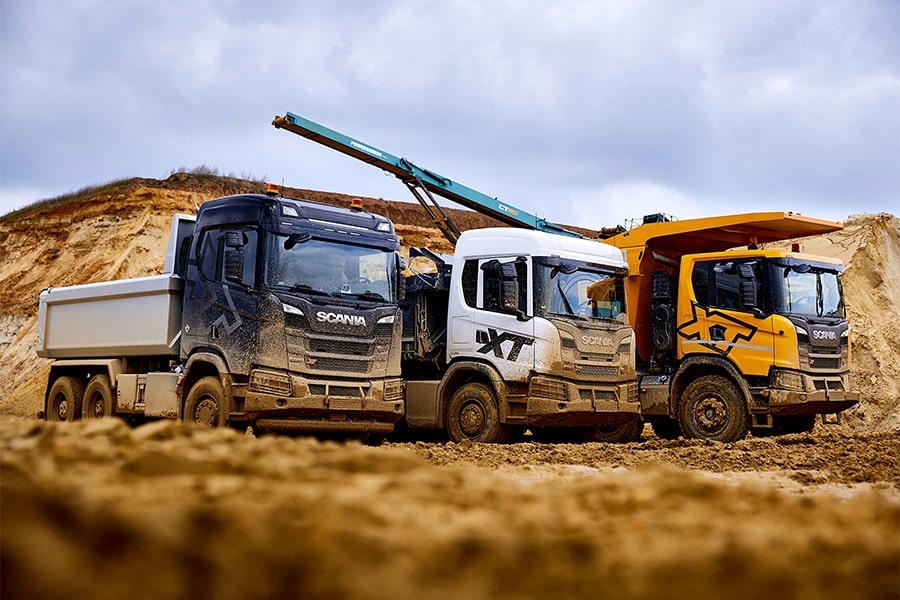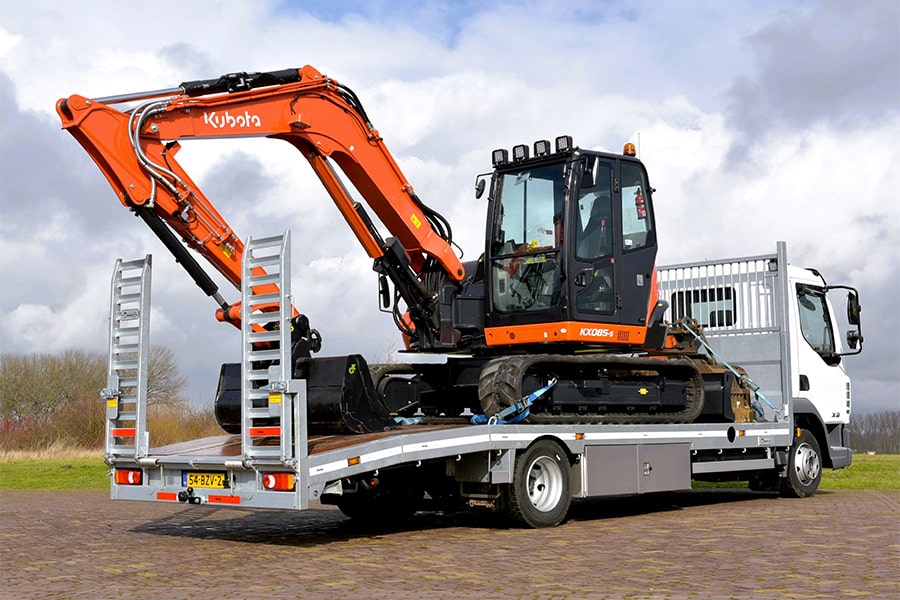
Circular road construction: from thinking to doing
"We are far along in the road construction field," Hofman opens the conversation. Hofman is Road Construction Materials Expert at the Department of Public Works. "In 2018, we held a competition for contractors to come up with ideas to (further) develop sustainable asphalt. The challenge: come up with the most optimal product to meet the targets (see box) for 2030." Hofman notes that we have reached a tipping point. From thinking to doing. "We now have to start turning theory into practice," he outlines.
For 2018, we've been mostly theoretical, he concludes. "That doesn't apply to the 'low hanging fruit,' things like 30% to 50% reuse were already there, but it's now time to take a structurally bigger approach to everything. Reuse is already common, but on a downgrade basis. Reused asphalt disappears into the underlayment of a new road. That's not enough in light of the goals."

Reuse in the top layer
The objective is to reuse asphalt in the top layer. The result of the competition was good, contractors offered products that were tested in 2019 and 2020. "We made three test sections with different products. In those test sections, everything is measured in terms of CO2-reduction, safety, skid resistance and noise. A very broad, risk-based test. We have not made a final judgment on this at this time (at the time of the interview - ed.). In the Week of Circular Economy & Climate in early February, we will discuss the results of the tests in the test sections. (In a later edition GWW will discuss this in detail - ed.) Are we going to make it, we ask. Hofman smiles and replies, "I'm almost certain."
Three methods
Asked about the three methods being tested in the test sections, Hofman lists: "The first method assumes round 90% reuse of ZOAB in ZOAB produced at lower temperatures. This is called the 'LE2AP process' and reduces CO2-emissions dramatically. There is almost maximum reuse." About the second method: "Here we try to reuse asphalt that comes off the road as much as possible. Normally these are rough processes, where you lose a lot. On the road you mill off 'schollen', in the factory they are put through the shredder. The new technique we are now using is called 'crushing,' a much more careful process, where everything is taken apart, instead of being 'crushed.' This results in the pebbles in the ZOAB retaining the same fraction and thus remaining suitable for ZOAB. This saves adding new pebbles and the openness of the porous asphalt is fully maintained thanks to the good ratio of raw materials. Did you know that 80% of our road network now consists of ZOAB? This technique is transferable 1 to 1, for provinces and municipalities. The crushing process is not specifically suitable for ZOAB, but can also be applied to provincial roads. So production at lower temperatures combined with the bruising method ... that's pure profit." Hofman sees a future in combining the methods. Contractors are in the asphalt plant together anyway, they use each other's production techniques. Let the climate goals connect the contractors."
Finally, the third method: in situ reuse. "Instead of taking asphalt off the road, transporting it, crushing it and taking it to the asphalt plant, after which it has to be taken somewhere again, the third method assumes in situ recycling. This method is called "asphalt recycling train," and that's how to imagine it. The first mobile unit mills the asphalt from the road, then it enters the next unit, the mobile crusher, from there it goes to the mobile mixer and then into the mobile furnace, where it is heated. You do have to make additions during the process, such as pebbles and bitumen, but at the front the old asphalt goes 'into the train' and at the back new asphalt comes out."

No turning back
Hofman emphasizes that there were many more valuable entries to the competition. "With at least three of these innovations we are also going to build test sections in the coming years. A lot of good stuff has been submitted by market parties. It has become clear to Rijkswaterstaat that we must have these kinds of innovations. We will keep control of the story and thoroughly investigate what works in practice, with a strong focus on CO2-reduction and reuse of raw materials. By the way, we left electrification out of this story; that movement is already underway on a broader front; road construction automatically rides that wave."
Overall, Hofman says there is a lot of quality among the 14 entries to the competition. "We are encouraging the winners with a financial boost in the further development of their ideas. We are also investigating the applicability of other entries, all of which, by the way, are from the Netherlands. One thing is already certain: reuse rates that are now becoming possible are not yet known abroad. As far as we are concerned, there is no turning back, but the gaze is firmly set ahead."

Creating calculation rules
Within the sector, innovations under the banner of the "Asphalt Impulse" have now been underway for about three years. Hofman explains, "In the context of sustainability, we delivered calculation rules in July 2020, which were drawn up by market parties. This allows all clients to link their request for proposal to an EQI. Rijkswaterstaat, the provinces and the municipalities are already doing this. Only in this way can we move toward the uniformity we need, in order to proceed together in a structural and planned way. Let it be a good incentive for the sector to come up with innovations now! The time is more than ripe for it."
KCI
The Ministry of Infrastructure and the Environment has drawn up the Climate Neutral and Circular Infrastructure Projects (CIP) Strategy together with Rijkswaterstaat and ProRail. This is based on the ambition, as a major commissioning authority for infrastructure projects, to be fully climate-neutral and circular by 2030, with high-quality reuse of all materials and halving the use of primary raw materials. The program that implements the CIP strategy takes place through transition paths. These transition paths represent the IenW work areas with the greatest climate impact: road paving, engineering structures, shoreline care & channel maintenance, construction site & construction logistics, superstructure rail and energy supply rail.
Through the Road Pavement Transition Path, Rijkswaterstaat is giving concrete expression to this ambition. Rijkswaterstaat is therefore switching to sustainable road paving, climate-neutral and 100% circular, but with the high quality standard we are used to in the Netherlands.



